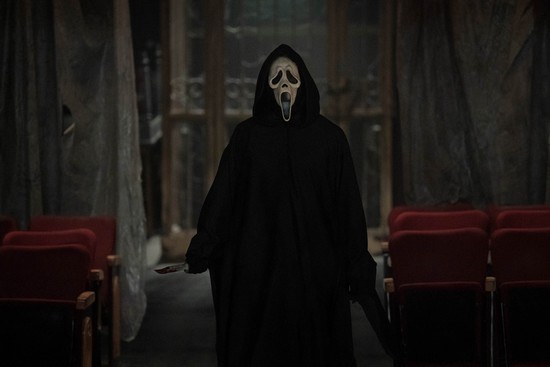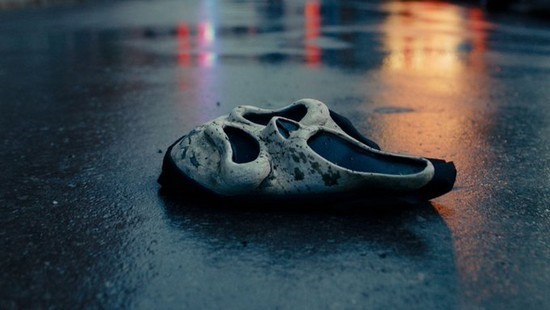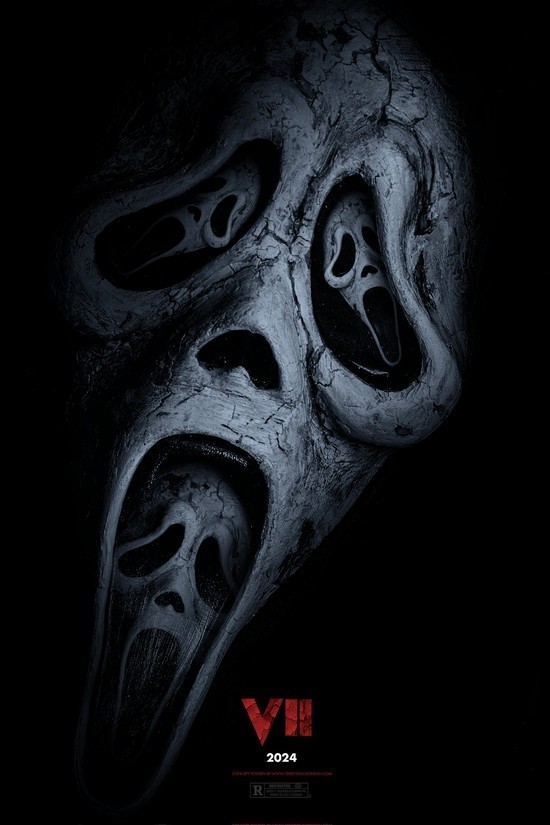When Jason Voorhees took Manhattan, he rode the subway.
Walter Hill’s gang members in “The Warriors” prowled the Metropolitan
Transportation Authority. Now Ghostface is riding the 1 train.
اضافة اعلان
In “Scream VI,” the latest in the long-running horror
franchise, the action moves from suburban Woodsboro, California, to New York
City, where it follows the heroes on an anxiety-inducing subway ride. Trying to
travel downtown for what will end up being the climactic showdown, the stars
are trapped on a jam-packed Halloween commute with multiple riders wearing the
Edvard Munch-ian masks and black robes that have become a hallmark of these
movies. Is one of the straphangers the bad guy? Or are they all just tasteless
partygoers donning the costume of a murderer on the loose? Given that this is a
“Scream” movie, you can probably guess that at least one of them has a knife
primed for stabbing.
The sequence is not only the most tension-filled in the
film, it also acts as an homage to frightening subway scenes of yore, and plays
into present-day fears about the city’s transit system. Even though the latter
wasn’t what the filmmakers were going for, it’s par for the course for the
genre.

“Horror movies notoriously ruin things for people and make
people afraid of things,” Guy Busick, one of the film’s writers, said in an
interview.
In “Scream VI,” Sam and Tara Carpenter (Melissa Barrera and
Jenna Ortega), the sisters who became Ghostface’s target in the 2022 reboot simply
titled “Scream,” have moved to New York. There Tara is attending college along
with her high school pals Mindy and Chad Meeks-Martin (Jasmin Savoy Brown and
Mason Gooding) as well as some new acquaintances, aka potential suspects. It is
all undergraduate drunken revelry until a killer starts stalking.
Almost as soon as Busick and co-writer James Vanderbilt
decided to set the film in New York, eager to move the franchise to the big
city, they envisioned a subway sequence. But Vanderbilt, who grew up nearby in
Connecticut and would frequently visit, wanted to subvert the familiar idea
that a relatively abandoned car was the most terrifying scenario.
“That thing where it’s 2 in the morning was never scary to
me,” he said. “What’s scary to me is it’s really hot and there are 150 people
in the car. Take Ghostface out of it. That, to me, is still scary.” Add
Halloween — and the accompanying disguises — and it’s only more unsettling.
In the film, the Carpenters and their friends decide they will be safer if they all travel together in a public setting. Amid aggressive crowds, the doors close before two members of the group can get on, and, with cellphone service spotty and plenty of potential slashers present, the plan goes awry.
In the film, the Carpenters and their friends decide they
will be safer if they all travel together in a public setting. Amid aggressive
crowds, the doors close before two members of the group can get on, and, with
cellphone service spotty and plenty of potential slashers present, the plan
goes awry.
The film’s directors, Tyler Gillett and Matt
Bettinelli-Olpin, were immediately excited by the prospect of a Ghostface
attack on the subway.

“The whole movie is built around these ideas of danger in
public and what’s right in front of you, and that, for us, was the scene where
all of that comes together,” Bettinelli-Olpin said.
At the same time, they were aware of the challenges. For
budgetary reasons, production took place in Montreal, where the transit system
looks nothing like New York’s. They considered importing a decommissioned train
car from New Jersey, but it was too heavy to sit on their production stage. It
ultimately fell to production designer Michele Laliberte to re-create a 1 train
from scratch.
Shooting took place over three days and involved 140 to 180
extras, clothed in costumes ranging from normal businessman to Debbie Harry in
David Cronenberg’s “Videodrome.” (Fun fact: If you can spot her, it’s Harry’s
actual costume.)
Gillett and Bettinelli-Olpin do not live in New York, and
they admit that their version of the subway owes as much to cinema as it does
to real life. That fits with the ethos of the self-referential “Scream” series,
in which characters are continually offering meta-commentary on what they are
going through.
“‘Warriors’ is like my touchstone for subway movies,”
Bettinelli-Olpin said, referring to the iconic 1979 action flick about warring
gangs in which the subways turn into hideouts and battlefields. “I just assume
it’s still like that all the time.” (It is not.)

Gillett added that they had also looked to the subway
sequence in Todd Phillips’ 2019 “Joker” where Joaquin Phoenix’s loner, in clown
makeup, is assaulted by three besuited jerks on the train before shooting them.
(Technically this takes place in Gotham City, but the film did little to hide
its New York locations.)
“The level of grit and grime and texture and feeling of it
being really, really real was something we really wanted to borrow,” Gillett
said.
The real-world relevance was not top of mind for
Bettinelli-Olpin, Gillett or the writers, but it is impossible not to think
about that fear when watching the characters’ petrified faces as they search
for danger at each stop. And although the filmmakers were not trying to evoke a
specific post-lockdown perspective, they were going for a sense of dread.
“That whole sequence is really about paranoia,” Gillett
said. In this case, that paranoia comes from an excess of people packed into a
metal tube, rather than a dearth of them.
And when you really think about it, there are few things
more unnerving than being stuck underground with a bunch of strangers — even if
a serial killer is not running loose.
Read more Reviews
Jordan News



